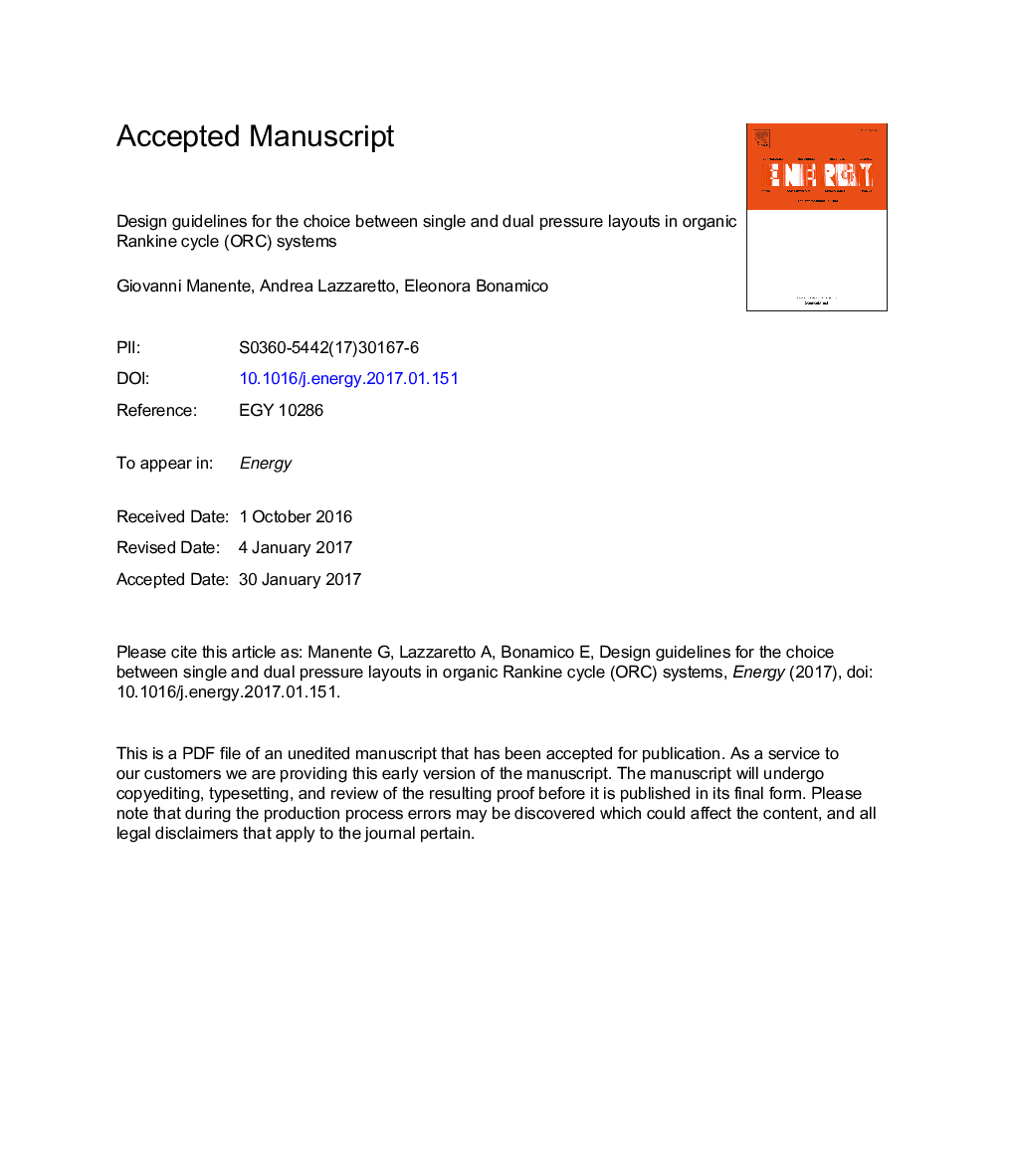| Article ID | Journal | Published Year | Pages | File Type |
|---|---|---|---|---|
| 5476111 | Energy | 2017 | 52 Pages |
Abstract
The efficiency benefits deriving from the staging of the evaporation process into multiple pressure levels are well known in the field of gas-steam natural gas combined cycles where dual and triple pressure bottoming cycles represent the standard layouts. A similar development of the cycle architecture has not been observed in the field of organic Rankine cycle systems (ORCs). In this paper the dual pressure layout is compared against the single pressure one at subcritical conditions in the utilization of a geothermal heat source in the range 100-200 °C, and considering a set of working fluids wide enough to take advantage of the features of both layouts. The paper proposes simple and unambiguous design guidelines to avoid the unnecessary complexity of the dual pressure layout when the single pressure one already ensures the highest power output, while taking advantage of its full potential in all the other conditions. Results show that the power output gains deriving from the dual pressure configuration are particularly high (up to 29%) at lower geothermal fluid temperatures (100-125 °C) and gradually diminish at higher temperatures (150-200 °C) where some of the selected fluids already obtain the best thermal matching with the heat source in the single pressure configuration.
Keywords
Related Topics
Physical Sciences and Engineering
Energy
Energy (General)
Authors
Giovanni Manente, Andrea Lazzaretto, Eleonora Bonamico,
